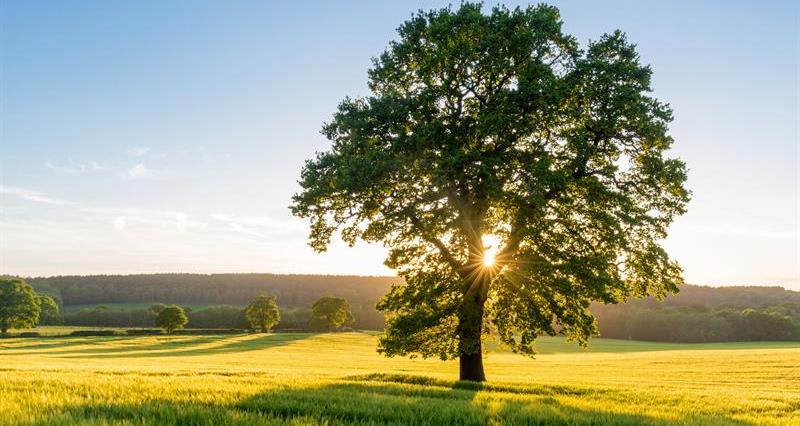The aim:
To increase the amount of carbon sequestered and stored on farm in individual trees, woodlands and commercial forestry
The actions:
- Plant trees where appropriate
- Sustainably manage and restore existing trees and woodland
- Consider agroforestry -a land management approach that combines trees and shrubs with crop and livestock farming systems
The results:
For the business:
The integration of trees and shrubs into farming systems provides a range of benefits beyond carbon sequestration that enhance farm productivity, resilience and profitability. These include improved water carrying capacity and flood alleviation, reduced pollution, improved soil health and increased habitats for wildlife. Trees integrated into arable settings provide shelter for crops, attract pollinators, improve nutrient cycling and have been proven to reduce soil erosion by up to 65%1.
For livestock, trees improve health and welfare by providing shade and shelter, increasing nutritional diversity, reducing stress, improving immune function, and increasing biosecurity.
There are a variety of potential financial benefits including through carbon offsetting/finance schemes for carbon sequestration, through the future Environmental Land Management (ELMs) scheme for wider environmental benefits, and through commercial forestry opportunities.
For net zero:
Research by the European Agroforestry Federation has found that when planting at a density of 50-100 trees per hectare, carbon sequestration per hectare is 1-4 tonnes per year.
How to measure success:
As with hedges, the carbon sequestration potential of agroforestry is a new area of study. Different designs and tree densities within agroforestry schemes will sequester carbon at different rates. What we do know for certain is that trees sequester and store carbon whilst simultaneously providing a range of other environmental and farm productivity benefits. Our advice to farmers is to start planting trees now. As data becomes available this page will be updated.
Action |
Cost |
Time |
|
Ensure existing trees are well managed and in good health to secure existing carbon stocks. Currently around 40% of existing woodland is not actively managed. |
|
|
|
Plant new trees to increase carbon sequestration on‑farm. Tree planting comes in various forms from large areas of land planted for woodland to individual trees on farm or as part of hedgerows. There are many factors including location, topography, species, density, and a changing climate that must be considered to ensure the ‘right tree is in the right place’ providing carbon sequestration and not losses. The Woodland Trust provides guidance on tree planting. |
|
|
|
Agroforestry - The most appropriate form of agroforestry will depend on the individual farm situation but there are forms of agroforestry for arable farmers, livestock farmers and horticulturalists. Agroforestry can be designed in a way that avoids potential tradeoffs between food production and other public goods. Research shows that the adoption of agroforestry can increase farm productivity, sustainability, land use efficiency and profitability. The Woodland Trust has more information on Agroforestry, and along with the Soil Association has produced a useful handbook for agroforestry. |
|
|
| Commercial forestry - Trees can provide economic benefits if they are managed as a second crop. This could be timber, firewood or biomass fuel, which can be marketed or used on farm to reduce costs. Or food crops such as fruits and nuts that can provide additional income. |
|
|
